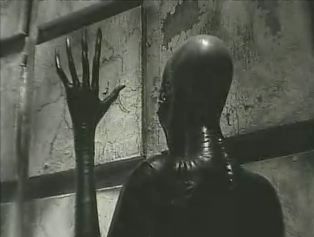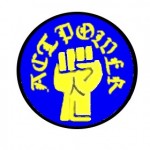Coming home after witnessing the Singaporean elections in May, it has been interesting to watch the preludes to New Zealand’s elections in November. In SG it was a matter of all against one, with the “all” in opposition being heavily constrained in what they could  do or say by the ruling party. Even so, opposition to the PAP gained parliamentary seats and an increased popular vote. Voter turnout was higher than in previous years, and the youth vote was an important factor in the outcome. There was a clear dividing line between pro-regime and opposition parties, with political identities drawn over issues of authoritarian efficiency versus increased accountability, material entitlements, transparency and representation. There was a focus to the electoral debate.
It seems that in New Zealand there is no such clear-cut divide along the political centre. Instead there exists a political spectrum that is frayed along the edges and which has an ideological void in the middle. Â ACT is splintering, as did the Maori Party once Hone Harawira quit. The common denominator is that on both ends of the New Zealand electoral divide, where the most ideological elements of political society reside, there is a complete lack of unity, much less understanding of the need for a common class line. This plays into the hands of the mainstream parties. At the risk of over-simplification and claiming no particular expertise, let me sketch the broad contours.
The putsch against Rodney Hide was a triumph of the market ideologues over the social conservatives in the ACT party. The Garrett scandal, the odd views of some of its MPs and Hide’s increasingly populist rhetoric are seen as deviations from the neoliberal market ideology that is supposedly the core of the ACT belief system. When Hide became vulnerable over his use of taxpayer money (the perk-buster was found to be more of a perk-consumer), the market ideologues moved against him. Concerned about demographics, ACT has managed to secure a commitment to stand from an influential female ex pat blogger with a reputation for brutal honesty and corporate savvy. It also recruited a farmer.
Once the Don was installed as the new Leader, ACT showed another face–that of racial revanchist. Crossing the market ideologue/social conservative divide, there is some serious opposition within ACT to maori redistributive claims and the erosion of Pakeha prerogatives under the banner of political correctness. Rather than delve into the reasons for its opposition, ACT has chosen to publicly focus on individual maori that it describes as extremists who are holding the country financially hostage with their ongoing demands. Among these is Hone Harawira. This is not a view shared by all market ideologues in the party, so the “white cowards” have been called out by the revanchists. What is lost in the intra-party discussion about identity and cultural claims is the common class line that ostensibly binds ACT together–that of the trade-oriented corporate elite. Whatever they think in private, this elite is bound to be horrified by the presence of racial revanchists in the Party, which could reduce the amount of material and political support that they will pledge to it. Absent a coherent structural underpinning to its other ideological claims, ACT has little to offer even them.
The Maori Party has done likewise. It was never a progressive party, but instead is a socially conservative vehicle that represents the interests of the maori economic elite and important iwi (specifically, leadership hierarchies). Its major focus is on ownership within the legal structures as given, and on specific budgetary earmarks for maori given Crown obligations under the Treaty. This is a source of division with the likes of Harawira, who sees things from a working class, indigenous sovereignty perspective.
The Mana Party is a reflection of the latter view, to which have been added those of assorted communists, socialists, anarchists and maori rights activists who can be roughly divided between (mostly Pakeha) anti-imperialists and (mostly maori) Â indigenous sovereignty supporters. There is considerable overlap between the two camps, although the issue of native ownership is a thorny subject for the marxists. Here too there is a lack of a consistent class line, or structural foundation, upon which to build the cultural and socio-political bases of the party. Some in Mana put indigenous rights above all other things; others put working class interests to the fore. Neither side has a realistic economic agenda given New Zealand’s structural realities.
There is also a cult of personality aspect to Mana that belies its progressive label. Rather than represent a Kiwi version of Malcolm X as some have suggested, Hone is more akin to the Reverend Al Sharpton. He is loud, he is proud, but he is not exactly a revolutionary threat to the system. Unlike X, who did not allow whites into his party and who preached on the merits of  voluntary self-segregation and the need for a separate black state within the US based upon economic independence, Hone accepts Pakeha support while fulminating against colonial injustices and their modern legacies. He acts as an agent provocateur rather than an agent for change. Given the views of the anti-capitalists in the Mana party whose priorities are more class-based than identity-driven, this does not make for ideological coherence between the base and the leader.
The Greens have moved away from their Left origins and settled into the role of responsible middle class party with a focus on sustainable development. Having mostly removed the red from the party watermelon, the second generation of Green party leaders have become the preferred channel of expression for environmentally aware voters with an interest in universal rights, egalitarianism, sovereignty and non-intervention (to include opposition to trade agreements without environmental and human rights provisions). This makes it a comfortable partner for Labour, a bridge between the Maori and Mana parties in areas of common concern, and an inoffensive adversary of National that can be worked with on specific issues. In spite of their attractiveness to the enlightened bougeousie, the Greens have no class line.
The absence of strong class orientations, be it Right or Left, along the fringe of NZ politics is  in part a deliberate result of the blurring of class lines and focus on economic individualism promoted over the least two decades by the two major parties. Both parties subscribe to market-driven logics, tempered by populist appeals around election time. Both represent the interests of corporate, rather than class actors–National defends the logic of the Round Table while Labour defends that of the union movement and domestic market capitalists. Neither represents the interests of a given class, but instead attempt to cross over voter preferences with catch-all appeals oriented towards the economic centre: the salaried middle classes. The latter are the swing voters who are less inclined to see themselves as a distinct interest group, are less ideological in their views, and who have not collectively organised to that effect. By  targeting this segment of the electorate the mainstream parties are able to give the interests of their supporting corporate class fractions much broader political appeal.
In New Zealand the electoral fringe holds less popular sway than before, and has less of an influence on mainstream politics. It will not matter in November’s electoral math, and some parties may well disappear. This is a pity because at a minimum the ideological fringe in an MMP system is useful as a means of keeping the centrist parties more honest when it comes to issues of class, race and public policy interest. Ideally, fringe parties provide the outer ideological markers that frame policy debate at any given moment. Absent a coherent ideology embedded in a class line amongst fringe parties, the parameters for policy debate narrow considerably. Given non-ideological competition between the major parties, this leads to unrepresentative distortions in the way in which policy reform is argued and made.
Admittedly, this is a very broad, subjective and impressionistic overview. Supporters of the parties in question will no doubt take exception to my views. Others will see my emphasis misplaced or that I am just plain wrong on specifics. I will happily stand corrected where necessary. What I have tried to do is not argue the details but note the larger trend. The lack of a class line in New Zealand’s political fringe is both a product and a reinforcement of the corporatisation of mainstream politics and popular culture, with policy debates stripped of structurally-based ideological content and confined to those areas in which corporate solutions are possible. Stripping ideological content from public policy debates diminishes the quality of democracy. In a society anchored in structural inequalities (however mystified by issues of identity and post-modernism), the absence of class-based ideological debate leaves the field of politics open to corporate elite domination, no matter how much “trickle down” policy proposals are offered during political campaigns. There is, in other words, no substantive class focus to political debate even during elections.
In November we will be reminded of that fact.

 Andrew Geddis has a
Andrew Geddis has a 
